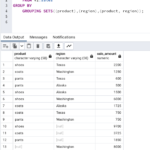 Solid state hard drives or SSD’s as they are also known are the latest generation of hard disk storage. They are far superior to traditional hard disk drives because of the absence of moving parts and so are blisteringly faster in comparison.
Solid state hard drives or SSD’s as they are also known are the latest generation of hard disk storage. They are far superior to traditional hard disk drives because of the absence of moving parts and so are blisteringly faster in comparison.
Due to the architecture of the platter based hard disk, it is much slower than other parts of the server and can typically be the source of a bottleneck in the system. Like with any problem, there are people who specialise in sorting the issue out.
There are many thousands of performance tuning experts who make a living from getting to the root cause of all the I/O issues in a system and I doubt that there is not one of them who has thought what a great evolution the SSD is but at the same time, feeling a little apprehensive about their own future as a performance tuning professional.
If all I/O issues could be eliminated by a hardware upgrade, then managers will seriously consider implementing SSD’s if the ROI is right for the business. Currently however SSD’s are far more expensive than the platter based hard disk so when considering purchasing new hardware, the SSD won’t be something which system managers will necessarily go for in favour of the older design.
Even if managers may not have the entire disk storage system running on SSD’s, the SSD is starting to make an appearance in the database server setup finding its place to store tempdb for example – a busy database which is often placed on its own disk storage system.
As with anything new, it’s always expensive in its infancy but as new versions of it are made and competing products are produced, costs are driven down and sooner or later it becomes “the norm”. When I first learnt about the SSD, my immediate thought was that it would one day be the drive of choice for managers when designing a server.
This recent article by Lucas Mearian on ComputerWorld.com has certainly provided food for thought on the subject as it indicates that SSD’s may not improve as expected to for years to come.
Personally I think that those clever technology inventors will find a way to make it work both from a technological and cost perspective ensuring that the SSD or variant of will one day become mainstream in server configurations across the globe. Whether this means that the performance tuning DBA goes the way of the Dodo is difficult to say but there will be some people out there who will be thinking this to be a possibility.
Perhaps it is all relative and that as server hardware becomes faster, we as humans find new ways to push it to its limits and the requirements of ensuring that data access best practices to ensure optimal performance will be no less important in the future as they are now.


Hi Andy.
As SSD researchers say in linked article, “We can either have capacity or performance”.
So I think we will not share Dodo’s fate, at least for some dozen years or so 🙂
Anyway, even if new technology emerges, our civilisation is producing exabytes of data which will need to be analysed.
I think the I/O bottleneck will stay with us.
All the best,
Filip.
Hi Filip
Thank you for your comments and I hope you are well.
Take care.
Andy
Don’t forget that SSD disks have “a finite number of P/E cycles.” which makes them good for DW databases (READ:WRITE ratio. more reads than writes) but not operational databases..
In case of heavy loaded MS SQL database and SSD as storage for temdb it’s possible that it will shrink writable space to zero in 2-3 years (it depends on ssd size and type – mlc,slc and if you are using matrix like raid). Just calculate number of possible ssd write cycles / sql server writce cycles per day 😐
Anyway, in my opinion SSD are very cool 🙂 I have OCZ Agility3 120GB SATA3 in my desktop computer, with 16GB RAM my personal SQL Server works amazingly fast! (hdtach measured: ~read at 500MB/s). But it’s good to think through all that calculations before deploying Solid State Drives on production servers…
Great comment Michal, thanks.
Andy